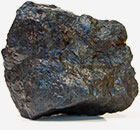Making waste water treatment more efficient and effective
Magnetite makes handy work of treating effluent and industrial waste water before discharge or reuse
By adding Magnetite as a “Ballast” increased treatment capacity can be achieved through a faster settling rate during the clarification process. In most cases this addition can greatly expand the amount of water treated within the existing footprint.
Coprecipitation, microfiltration and oxidation
Using extremely refined nanoparticles of magnetite, industrial water consumers are able to reduce contaminates in effluent through three diverse methods.
First, in coprecipitation, magnetite is introduced in water to increase its specific density and change the composition until the offending compounds begin to dissipate. As the particles dissipate, they fall with the magnetite to the bottom of the water making for easy extraction of treated water.
A second method – microfiltration – relies on the filtering properties of magnetite to prevent certain offending chemicals to proceed through tiny barriers before these chemicals are removed. When combined with coprecipitation, microfiltration is one of the most effective methods of dealing with biological and organic contaminates in effluent.
Finally, when it comes to those harmful heavy metals, such as arsenic, uranium or lead, magnetite’s unique oxygen-bonding properties come into play. Magnetite is introduced, and the compound eagerly releases oxygen, which in turn bonds with other metals, altering their densities and specific gravities, which allow for separation through passive means or mechanically assisted means.
Whether it’s knocking out bad bacteria or extracting harmful radioactive substances, magnetite plays a vital role in the treatment and disposal of contaminated water.
Request more information about Wastewater Treatment
A friendly Quality Magnetite customer service representative will be in touch to discuss your inquiry

